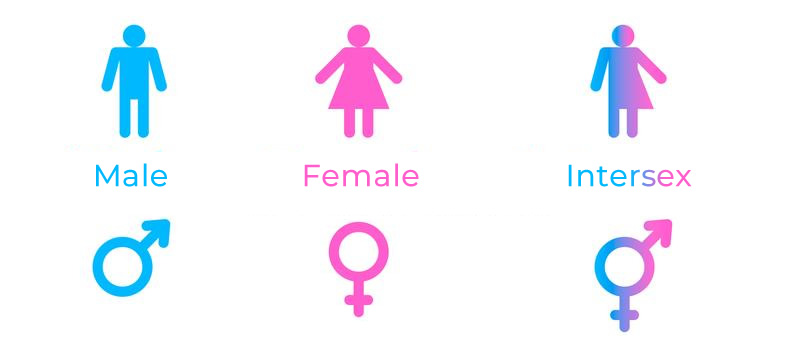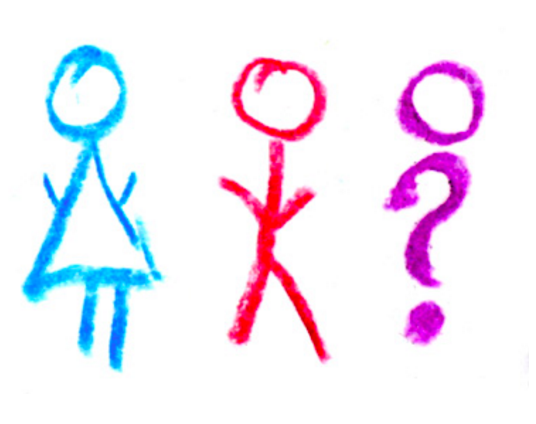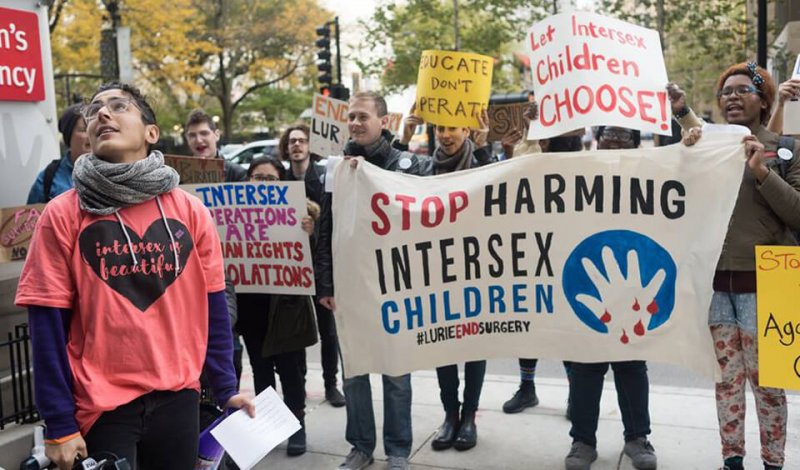As I sit here trying to talk about this underrated topic, I find myself lost between the ambiguous and vague information I could collect. There is still no consensus in the medical field regarding what the term “intersex” means. As one may think due to the little information we have heard, This denomination is used for people who were born with both male and female reproductive or sexual parts. Nevertheless, this is a mistaken thought perpetuated by the lack of information that non-medical people have about it.
The term intersex refers to a large community of people with numerous conditions that are not always visible. Some of these consist in having atypical sexual or reproductive parts, being born with mosaic genetic, and another amount of syndromes. Some of these situations even develop during puberty. As a consequence, an individual born with typical male body parts, may be anatomically intersex, but never get to know it.
Many of us have been taught that these are rare conditions emanating from genetic failures which are not normal by any means and must be corrected. Nevertheless, as I educate myself in this topic, I have come to the conclusion that this is erroneous. In many of the cases, being born intersex neither represents a danger to these individuals‘ lives nor to their reproductive capacities. Therefore, treating these conditions as anomalies is a product of the classic gender dichotomy, so strongly established in our societies that it will not allow in it any body that does not fit.

The Male/Female dimorphism
Before delving into this, I believe it is important to note that I am not referring to the gender. Although it is extremely important, gender roles and perspectives have been established over the common idea that only two sexes can be born. Therefore, this article addresses the latter issue rather than the gender dichotomy.
Since the beginning of history as we currently know it, society has accepted male and female as the only two sexes in which species can be born. This idea was established as as a result of convention as many people did not know any different. The differentiation was based on visual characteristics that distinguished one from another. With this belief strongly embroiled in the modern society, people born with unidentifiable sexual organs were treated as exceptions with genetic errors. Later, when science had advanced, these mistakes were corrected through surgery. Nevertheless, invisible traits of an intersex individual were still ignored, giving this “problem” a very inadequate and intrusive solution.
Accordingly, without further investigation and knowledge, the existence of these cases was marginalized to a point where surgically intervention was preferred for intersex newborns immediately after birth, thus giving them no chance to discover who they really are. With societal acceptance of this practice, intersex people have been left with limited options – to either get a medical procedure to change that condition or hide it forever.

Violence towards intersex
As a result of misconceived beliefs regarding sex and gender, intersex people continue to face discrimination and violence. This brutality sometimes presents itself in ways in which people may never realize they were violated. Arguably, intersex medical interventions represent a huge violation towards someone’s integrity and determination. In majority of the cases, these procedures are carried out just after birth, and with only the doctor’s concept of the physical attributes that define a male or female newborn. This way, if the medical team consider the parts of the newborn as atypical or ambiguous, they would surgically change them in order to make them look “normal”.
As the Intersex Society of North America has stated, these procedures greatly affect many lives, mainly in a psychological way:
The current traditional model of treatment for intersex newborns and children, established in 1950, affirms that, because the human species is sexually dimorphic, we must all appear to be exclusively male or female, making it impossible for children that carry a visibly intersex anatomy to become healthy adults. This model therefore recommends and reinforces the idea of early genital sex assignment surgery. It also encourages healthcare providers not to be entirely honest with intersex children or their parents. As an increasing number of us who are intersex have shared our experiences with one another, we have come to the conclusion that, for most of us, this management model has led to deeply damaging types of medical care interventions and to the abandonment of emotional support.
Our intersex – our status as neither typical male nor typical female individuals – is not beneficially altered by such treatment. Instead, it is expelled from the opinion of parents and caregivers. This “conspiracy of silence” – the policy of pretending that our intersex has been medically eliminated – in fact, simply exacerbates the situation of the intersex adolescent or young adult who knows he or she is different, whose genitalia have often been mutilated by “reconstructive surgery”, whose sexual functioning has been seriously impaired, and whose treatment history has made it clear that acknowledging or discussing our intersex violates a cultural and family taboo.”
Intersex Society of North America
Spreading awareness
Although this information might seem controversial, the point that I am driving at is the need to question what we have been taught. The idea that intersex people are anomalies comes from a long tradition of hetero-patriarchal societies in which any different form is denied. By questioning these beliefs, we may come to a better world in which every human variation is possible.
In order to ensure the wellbeing of the largest number of people possible, we must spread awareness about societal topics that we are well versed in, and be open to educating ourselves in those we do not know, or have limited knowledge in. While it is challenging to discover a whole new world of ideas, it is essential for the construction of a more accepting and a better society.
Furthermore, we need to stop medical procedures to intersex newborns as it has life-long consequences on the patient´s quality of life. Every person must be afforded the right and freedom to decide who they want to be, and not be obliged to modify their bodies to fit society’s gender categories. There are currently one or two people out of every 1,000 births receiving surgery to “normalize their bodies”.
References
Intersex Association of North America. What is Intersex? Available at: https://isna.org/faq/frequency/ Accessed on December 2020.
Disclaimer
The opinions expressed in this publication are those of the author. They do not purport to reflect the opinions or views of IVolunteer International.
IVolunteer International is a 501(c)3 tech-nonprofit registered in the United States with operations worldwide. Using a location-based mobile application, we mobilize volunteers to take action in their local communities. Our vision is creating 7-billion volunteers. We are an internationally recognized nonprofit organization and is also a Civil Society Associated with the United Nations Department of Global Communications. Visit our profiles on Guidestar, Greatnonprofits, and FastForward.


